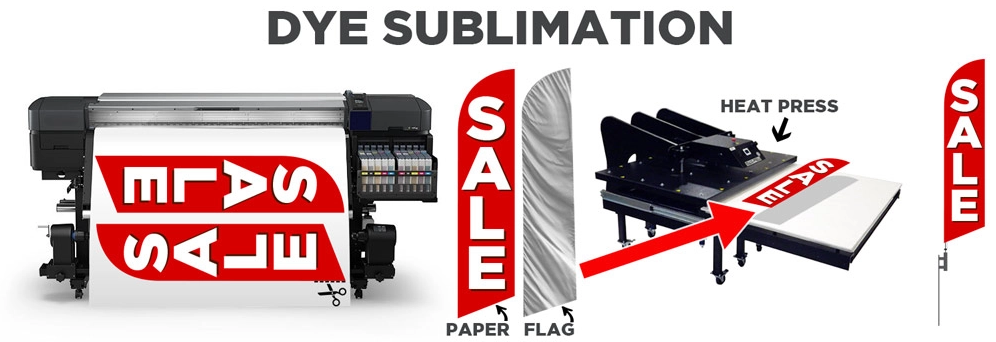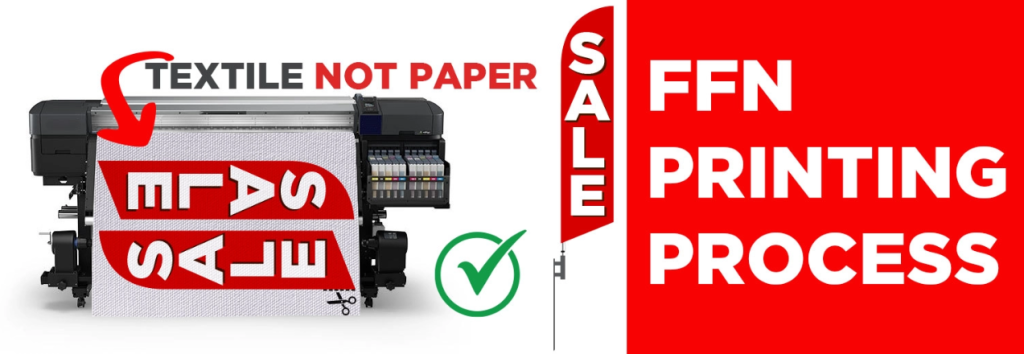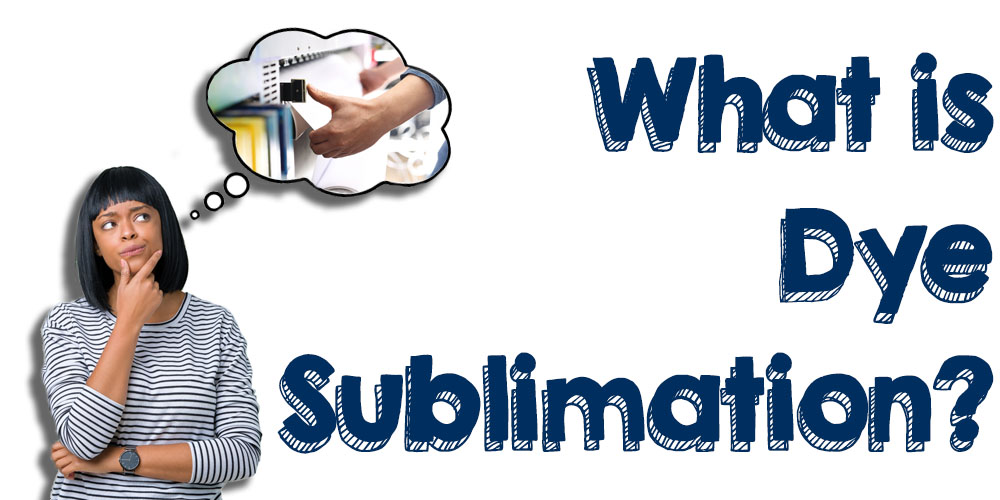How Does Dye Sublimation Work?

Dye sublimation is a print process that involves printing the graphics onto a piece of paper and then heat pressing the paper print onto the fabric. The heat pressing transfers the graphics from the paper to the fabric. This method provides great color matching, vibrant colors, and captures very fine details in the art. While the dye sublimation process is widely used for its impressive results, it’s essential to understand its advantages and limitations, especially when comparing it to other printing methods like direct-to-fabric printing.
The Drawbacks of Dye Sublimation
Faster Fading
The main downside of the dye sublimation process is that the colors will fade faster since they do not penetrate the material. Unlike dye sublimation, our direct to fabric printing process allows the ink to bleed through from one side to the other, which results in your graphics being visible from the back.
Material Limitations
The dye sublimation printing process works best on white or light-colored polyester fabrics. It cannot be used on cotton or dark materials without a special coating, which limits its versatility.
Higher Cost for Small Runs
Due to the setup, the dye sublimation process can be more expensive for small production runs compared to other methods.
The Benefits of Direct-to-Fabric Printing

At Feather Flags Nation, we use direct-to-fabric printing, which offers several advantages over the dye sublimation printing process:
- Longevity: The ink penetrates through the fabric, resulting in slower fading and enhanced durability, especially for outdoor use.
- Double-Sided Visibility: Direct-to-fabric printing allows the design to bleed through, making it visible from both sides. This is especially beneficial for flags and banners used in high-traffic or windy areas.
- Weather Resistance: This method creates graphics that withstand sunlight, rain, and wind better than dye sublimation prints.
- Cost Efficiency: Direct-to-fabric printing is often more affordable for larger projects while maintaining excellent quality for simple designs.
- Versatility: Unlike dye sublimation, this process works well with a variety of fabrics and color options, offering greater flexibility for your needs.
Dye Sublimation vs. Direct-to-Fabric Printing
While the dye sublimation process excels in color vibrancy and fine details, direct-to-fabric printing is the preferred choice for durability, double-sided visibility, and cost efficiency. While direct prints do fade slower, the trade-off is losing fine details on graphics and the colors sometimes not being 100% accurate. Since most flags do not contain live images, direct-to-fabric print is usually the best option. Our free color swatches will ensure that you are happy with the results.
Conclusion
Understanding the differences between the dye sublimation process and direct-to-fabric printing can help you make an informed decision for your project. While the dye sublimation printing process delivers vibrant colors and intricate details, direct-to-fabric printing offers long-lasting, weather-resistant designs that are visible from both sides.
Launch Your Vision with Feather Flag Nation Today
At Feather Flags Nation, we prioritize quality and durability, ensuring that your flags and banners stand the test of time. Ready to elevate your branding or event setup? Explore our in-stock feather flags and see the difference for yourself!
